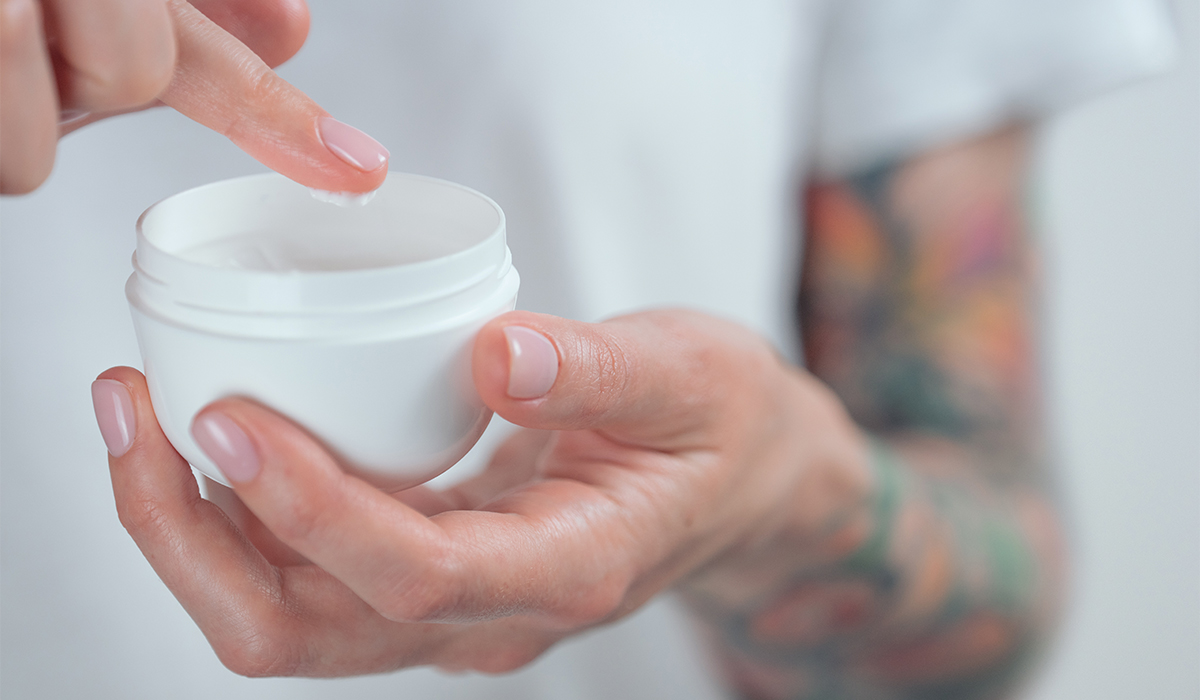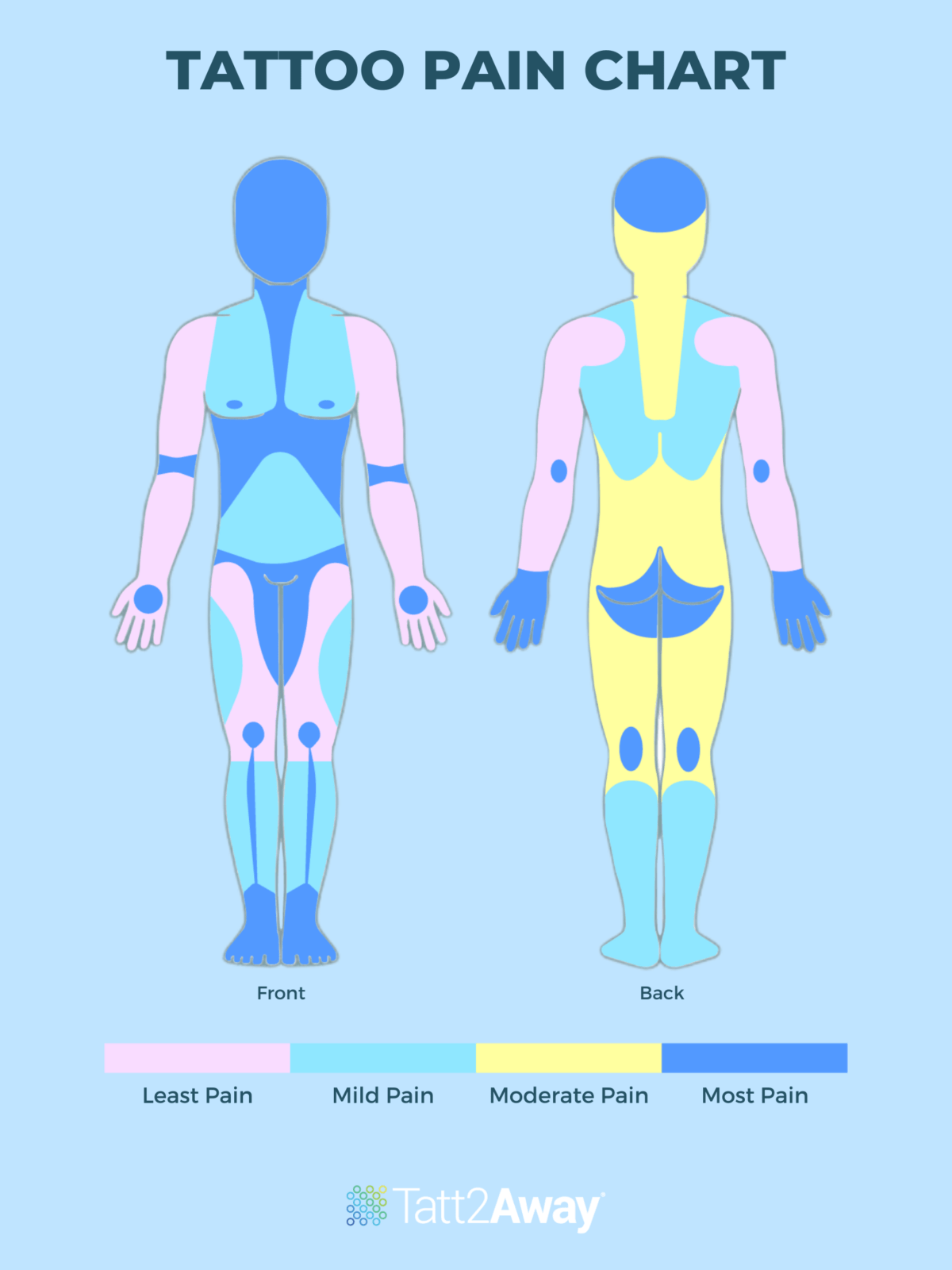
Can Coconut Oil Be Your Tattoo’s New Best Friend? Unlocking Nature’s Healing Power for Your Ink
So, you’ve just gotten a beautiful piece of art etched onto your skin – congratulations! Now comes the crucial part: aftercare. You want to ensure your tattoo heals perfectly, preserving its vibrancy and preventing any complications. Amidst the sea of aftercare products, a natural contender emerges: coconut oil. But can this tropical treasure truly help heal your small tattoo? Let’s dive deep into the world of coconut oil and discover its potential benefits for your precious new ink.
1. The Allure of Coconut Oil: Why It’s More Than Just a Kitchen Staple
Coconut oil has exploded in popularity, not just for cooking, but also for skincare and haircare. Its rich, emollient texture and pleasant aroma make it appealing, but the real magic lies in its composition. This oil is packed with medium-chain fatty acids (MCFAs), like lauric acid, capric acid, and caprylic acid, which are believed to possess remarkable properties that can contribute to skin health.
2. Decoding the Science: How Coconut Oil Might Help Heal Your Tattoo
While more research is always welcome, the existing evidence suggests that coconut oil could offer several benefits for tattoo healing:
- Moisturization Master: A new tattoo is essentially an open wound, and keeping it moisturized is paramount. Coconut oil is a fantastic emollient, creating a protective barrier that locks in moisture and prevents the skin from drying out and cracking. Dry skin can lead to itching, irritation, and even slow down the healing process.
- The Antibacterial Armor: Those MCFAs we mentioned? They possess antibacterial and antifungal properties. This is crucial for preventing infections, which are a major concern during the tattoo healing process. While coconut oil shouldn’t replace prescribed antibiotics for a serious infection, it can act as a natural defense against minor bacterial invaders.
- Soothing the Savage Itch: The dreaded itch! It’s a sign that your tattoo is healing, but scratching can damage the delicate new skin and potentially lead to scarring. Coconut oil can help soothe the itch by moisturizing and calming the irritated skin.
- Boosting Collagen Production: Collagen is the structural protein that keeps your skin firm and elastic. Some studies suggest that coconut oil can stimulate collagen production, which can help the skin heal faster and reduce the appearance of scars.
- Reducing Inflammation: Inflammation is a natural part of the healing process, but excessive inflammation can hinder recovery. Coconut oil possesses anti-inflammatory properties that can help calm the skin and promote a smoother healing process.
3. Small Tattoo Advantage: Why Coconut Oil Might Be Ideal
The size of your tattoo matters when considering aftercare. Coconut oil’s benefits are often best realized on smaller tattoos. Larger pieces require a more robust approach, and a dedicated tattoo aftercare product might be more suitable. But for a small tattoo, coconut oil can be a gentle and effective option.
4. Choosing the Right Coconut Oil: Virgin, Unrefined, and Ready to Roll
Not all coconut oil is created equal. For tattoo healing, you want to choose virgin, unrefined coconut oil. This type of oil is extracted without the use of harsh chemicals or high heat, preserving its natural properties and benefits. Avoid refined coconut oils, as they may contain additives that can irritate your skin.
5. The Application Ritual: A Gentle Touch for Healing Success
Applying coconut oil to your tattoo is simple, but it’s important to do it correctly:
- Cleanliness is Key: Always wash your hands thoroughly before touching your tattoo.
- Gentle Cleansing: Gently cleanse the tattoo with a mild, fragrance-free soap and warm water. Pat it dry with a clean paper towel.
- A Thin Layer is All You Need: Scoop out a small amount of coconut oil (a pea-sized amount is usually sufficient for a small tattoo) and gently rub it between your fingers to melt it.
- Apply with Care: Apply a very thin layer of coconut oil to the tattoo, using a light, circular motion. Don’t overdo it! You want the skin to be moisturized, not smothered.
- Frequency Matters: Apply coconut oil 2-3 times a day, or as needed, to keep the tattoo moisturized.
6. When to Proceed with Caution: Recognizing Potential Issues
While coconut oil is generally safe, it’s not without its potential downsides:
- Allergic Reactions: Although rare, some people can be allergic to coconut oil. If you experience any redness, itching, swelling, or rash after applying coconut oil, discontinue use immediately and consult a doctor.
- Over-Moisturization: Applying too much coconut oil can trap moisture and create a breeding ground for bacteria. Remember, a thin layer is all you need.
- Clogged Pores: Coconut oil is comedogenic, meaning it can potentially clog pores. This is more of a concern for people with oily or acne-prone skin. If you notice any breakouts around your tattoo, you may need to switch to a non-comedogenic moisturizer.
7. The First Few Days: Coconut Oil’s Role in the Initial Healing Stage
The first few days after getting your tattoo are crucial. During this time, your tattoo artist’s instructions should take precedence. They may recommend using a specific ointment or bandage. Once the initial bandage is removed and the tattoo starts to scab, you can introduce coconut oil into your aftercare routine.
8. Beyond Healing: Coconut Oil for Long-Term Tattoo Care
Even after your tattoo is fully healed, coconut oil can still be a valuable addition to your skincare routine. Regular application can help keep your tattoo looking vibrant and prevent the ink from fading over time.
9. The Power of Patch Testing: Ensuring Coconut Oil is Right for You
Before slathering coconut oil all over your new tattoo, it’s wise to perform a patch test. Apply a small amount of coconut oil to a discreet area of your skin (like your inner arm) and wait 24 hours to see if you experience any adverse reactions.
10. Listening to Your Body: The Most Important Aftercare Tip
Every body is different, and what works for one person may not work for another. Pay close attention to how your skin responds to coconut oil. If you notice any signs of irritation or infection, stop using it immediately and consult a doctor or tattoo artist.
11. Combining Coconut Oil with Other Aftercare Practices
Coconut oil can be a great addition to your tattoo aftercare routine, but it shouldn’t be the only thing you do. Continue to cleanse your tattoo regularly, avoid prolonged sun exposure, and wear loose-fitting clothing to prevent friction.
12. The Tattoo Artist’s Wisdom: Seeking Professional Guidance
The best source of advice for tattoo aftercare is your tattoo artist. They know your skin type and the specific inks used in your tattoo. Always follow their instructions carefully and ask any questions you may have.
13. Debunking Myths: Separating Fact from Fiction About Coconut Oil and Tattoos
There are a lot of myths surrounding tattoo aftercare. One common misconception is that coconut oil can lighten the ink. While coconut oil can help keep your tattoo looking vibrant, it won’t actually change the color of the ink.
14. Real-Life Experiences: Hearing from People Who’ve Used Coconut Oil for Tattoo Healing
Many people swear by coconut oil for tattoo healing, citing its moisturizing and soothing properties. However, it’s important to remember that everyone’s experience is different. Some people may find that coconut oil works wonders for them, while others may prefer other aftercare products.
15. The Final Verdict: Is Coconut Oil a Good Choice for Your Small Tattoo?
Coconut oil can be a beneficial addition to your tattoo aftercare routine, especially for small tattoos. Its moisturizing, antibacterial, and anti-inflammatory properties can help promote healing and keep your ink looking vibrant. However, it’s important to choose the right type of coconut oil, apply it correctly, and be aware of potential downsides. Always listen to your body and consult with your tattoo artist for personalized advice.
Conclusion:
Ultimately, the decision of whether or not to use coconut oil to heal your small tattoo is a personal one. By understanding its potential benefits and drawbacks, you can make an informed choice that’s right for you. Remember to prioritize cleanliness, follow your tattoo artist’s instructions, and pay close attention to how your skin responds. With proper care and attention, your tattoo will heal beautifully, and you’ll be able to enjoy your new work of art for years to come.
FAQs: Your Coconut Oil & Tattoo Questions Answered
-
Can I use coconut oil on a fresh tattoo, right after getting it done? Generally, no. Follow your tattoo artist’s initial aftercare instructions. Coconut oil is best introduced once the initial bandage is removed and the tattoo starts to scab.
-
Will coconut oil make my tattoo fade faster? No, coconut oil won’t cause your tattoo to fade. In fact, it can help keep your tattoo looking vibrant by keeping the skin moisturized.
-
My tattoo is itchy! Can I just slather on the coconut oil? While coconut oil can help soothe the itch, don’t overdo it. Apply a thin layer and avoid scratching the tattoo. If the itching persists or worsens, consult a doctor or tattoo artist.
-
I have oily skin. Is coconut oil still a good option for me? Coconut oil can potentially clog pores, so it might not be the best choice for people with oily skin. Consider using a non-comedogenic moisturizer instead.
-
Can I use coconut oil on an infected tattoo? No, coconut oil is not a substitute for medical treatment. If you suspect your tattoo is infected, consult a doctor immediately. They may prescribe antibiotics or other medications to treat the infection.





















